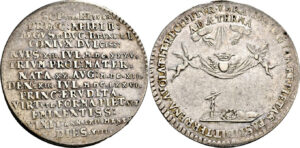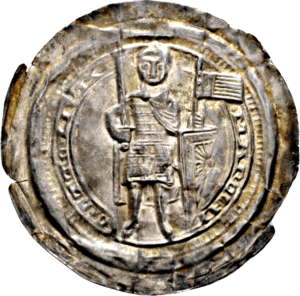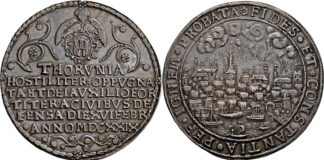Seitz collection excites the audience
The small collection of Celtic coins was well received right at the beginning and was awarded with decent results. Overall, the results for Greek coins were solid as well.

The Syracusean litra with the impressive octopus representation (lot no. 85), which only found its new owner at 1800€, caused a special sensation. The great interest in archaic electrum was confirmed by a trite with geometric pattern (No. 144), which reached € 3600 at an estimate of € 1500.
Of the Roman part, which went well overall, only the FDC Augustus denarius (No. 223) for € 3200 and the extremely rare camp gate aureus of Maximianus Herculius (No. 263) for € 5000 should be highlighted here.

A very rare dinar of the Fatimid revolution (no. 452) marked with its € 7000 (2500) the highlight of the Islamic section.
The following foreign coins showed the ever growing importance of online live bidding, which is increasingly opening the world market for consignors or sellers. Numerous coins found their way back to their homelands. Particularly noteworthy were the results of a small series of Norwegian coins, in which the estimate was increased by a factor of 20 in one case (No. 633). The participation of foreign
experts made the importance of internet bidding impressively clear.
Among the coins of the Habsburg hereditary lands especially the early Tyrolean strikings of Archduke Sigismund (called “the rich of coins”) and King Maximilian reached good results. Talers of East Central European mints, namely Bohemia and Hungary, also found great interest in the Internet. The current great interest in Czech coins was most apparent at lot 869, a Taler of Albrecht von “Wallenstein” (estimated € 15000, hammered € 25000,-).
This was followed on Thursday by the feudal German Talers, their fragments and medals, among which numerous rarities found their buyers. The focus was on a collection of Mecklenburg coins, some of them long unavailable, which were hotly contested. There, using the example of some bracteates and small denominations, it became apparent that even “exotic” coins, without any catalog prices, can find their market-driven hammer prices on their own. So reached a visually unimpressive anonymous penny of 13/14th century by long counter-bidding a proud result of 1600 € (No. 1204).
In the important Theobald Seitz collection, the medieval Meissen bracteates were often sold for multiple of their moderate estimates. The Talers and Schautalers of the Electoral-Ernestinian line reached some all-time records. The great interest in Saxon coins and bracteates in general was reflected here – in addition to a crowded auction room – by the number of telephone bidders who competed with the internet live bidders. On the whole, however, the timetable was respected.
On Friday morning, the German imperial coins followed with some beautiful gold coins and, as always, the remarkable and hotly contested combined lots, which were sometimes upped by the experts to four-digit results. On the whole, a successful auction ended, which because of the Seitz collection will be remembered.
Unsold coins can be bought within five weeks on the Peus website.









